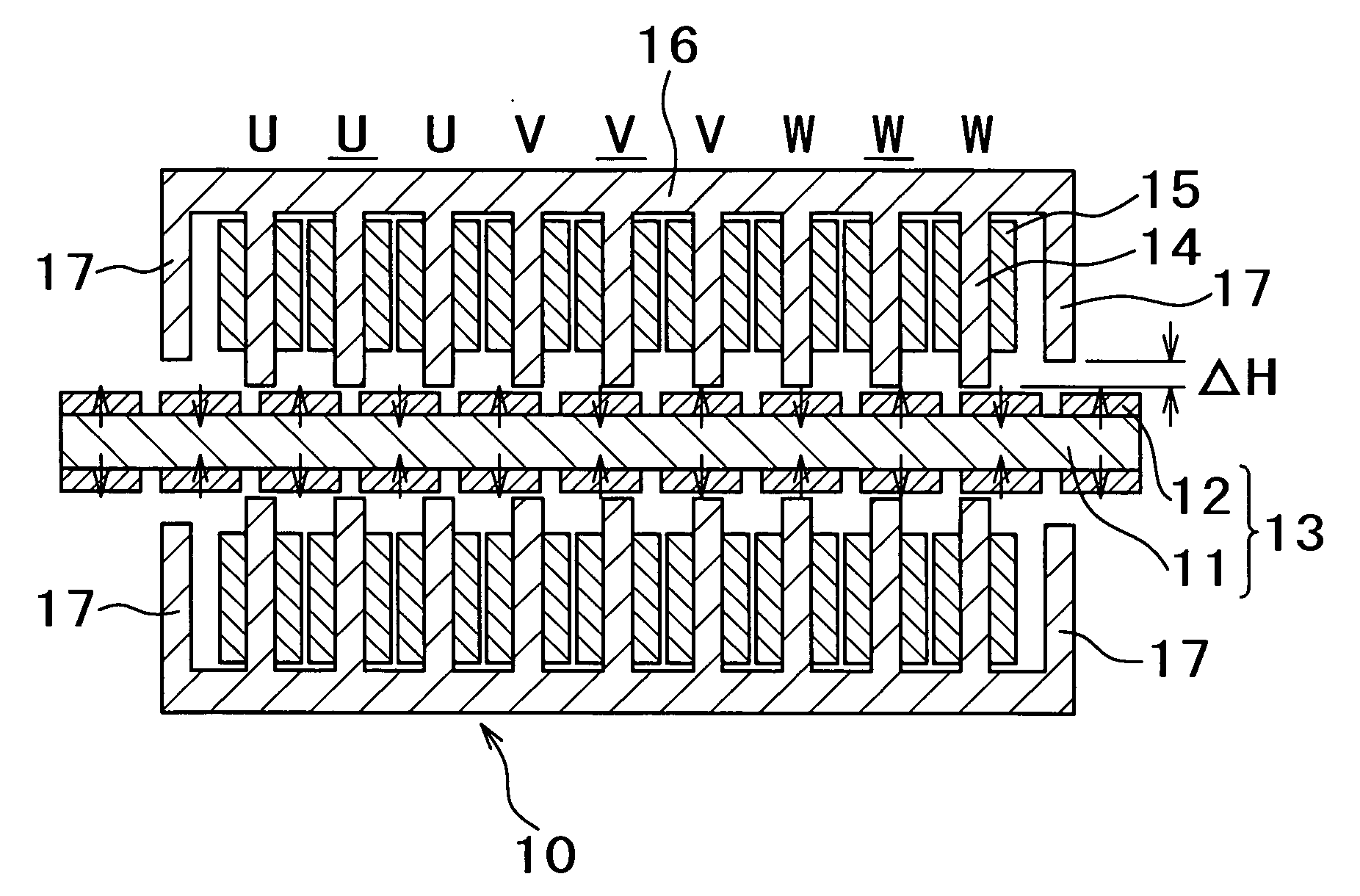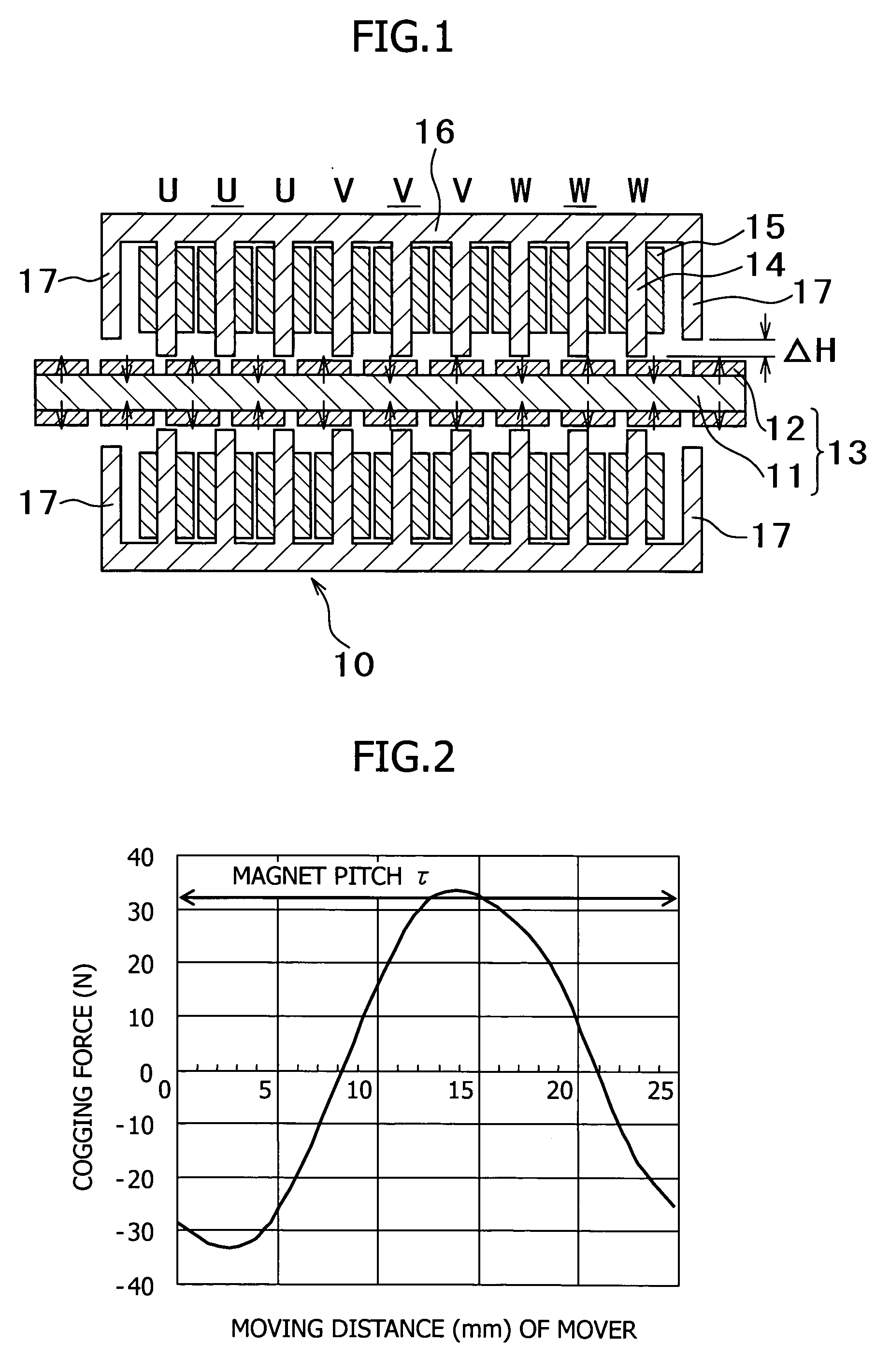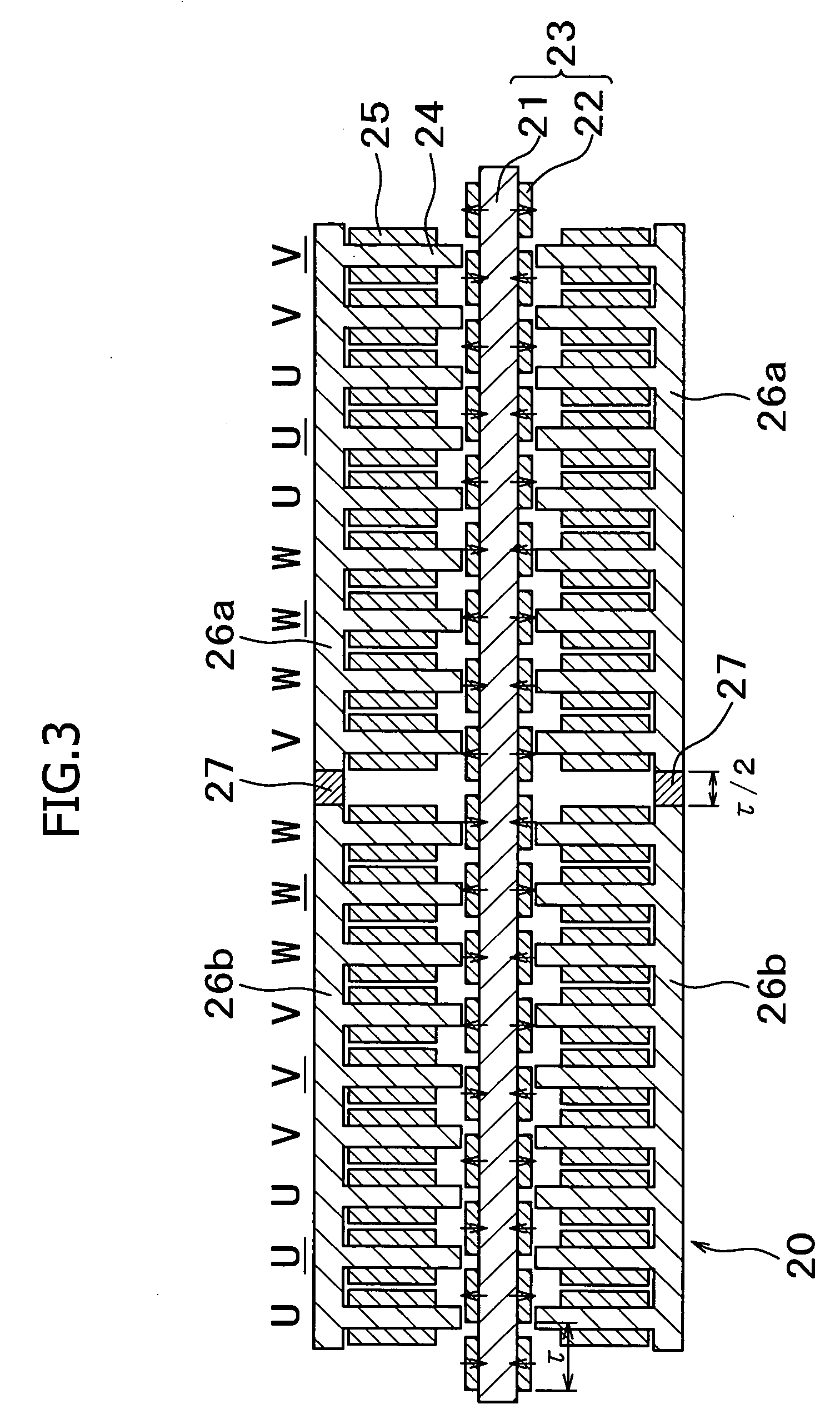Linear motor for use in machine tool
a linear motor and machine tool technology, applied in the direction of mechanical energy handling, dynamo-electric machines, electrical apparatus, etc., can solve the problems of reducing processing accuracy, limiting high-speed processing, and limiting speed at fast forward speed of 20 m/minute, so as to achieve high-accuracy processing, significantly reduce cogging force, and reduce processing speed
- Summary
- Abstract
- Description
- Claims
- Application Information
AI Technical Summary
Benefits of technology
Problems solved by technology
Method used
Image
Examples
example 1
[0068] Auxiliary cores were provided as shown in FIG. 1, and the magnetic flux distribution was adjusted by changing the difference ΔH between the face of the auxiliary cores and that of main cores. A Nd—Fe—B based permanent magnet was used, and an iron yoke was used for the main cores and the auxiliary cores. Regarding the section sizes in FIG. 1, the width of the magnets was 18 mm, the thickness of the magnets in the magnetization direction was 5 mm, the magnet pitch was 25 mm, the width of the teeth of the armature cores was 10 mm, the length of the teeth was 34 mm, and the thickness of the stator yoke was 19 mm. The gap between the movers and the stator magnets was 1 mm. The movers and the stator had a thickness of 50 mm in the cross-sectional direction. It should be noted that the magnet pitch (τ) was the sum of the width of each of the permanent magnets and the gap distance between adjacent permanent magnets.
[0069]FIG. 9 shows the results. As shown in FIG. 9, as the differenc...
example 2
[0071] As shown in FIG. 3, a second mover block was disposed with a spacing that is ½ of the magnet pitch, which corresponded to 180° of the waveform of the cogging force. A Nd—Fe—B based permanent magnet was used, and an iron yoke was used as the core material. Here, regarding the section sizes in FIG. 3, the width of the magnets was 18 mm, the thickness of the magnets in the magnetization direction was 5 mm, the magnet pitch was 25 mm, the width of the teeth of the armature cores was 10 mm, the length of the teeth was 34 mm, and the thickness of the stator yoke (iron plate) was 19 mm. The gap between the movers and the stator magnets was 1 mm. The width of the spacer (non-magnetic stainless steel, SUS 304) between the first and second blocks was 12.5 mm. The movers and the stator had a thickness of 50 mm in the cross-sectional direction. It should be noted that the sizes in the conventional example in FIG. 14 are set to be the same as those in this example except that the mover an...
example 3
[0074] As shown in FIG. 5, second and third mover blocks were disposed with a spacing that is ⅓ of the magnet pitch, which corresponds to 120° of the waveform of the cogging force. A Nd—Fe—B based permanent magnet was used, and an iron yoke was used as the core material. Here, regarding the section sizes in FIG. 5, the width of the magnets was 18 mm, the thickness of the magnets in the magnetization direction was 5 mm, the magnet pitch was 25 mm, the width of the teeth of the armature cores was 10 mm, the length of the teeth was 34 mm, and the thickness of the stator yoke was 19 mm. The gap between the movers and the stator magnets was 1 mm. The width of the spacers (non-magnetic stainless steel, SUS 304) between the first and second blocks and between the second and third blocks was 8.33 mm. The movers and the stator had a thickness of 33 mm in the cross-sectional direction. It should be noted that the sizes in the conventional example in FIG. 14 are set to be the same as those in ...
PUM
 Login to View More
Login to View More Abstract
Description
Claims
Application Information
 Login to View More
Login to View More - R&D
- Intellectual Property
- Life Sciences
- Materials
- Tech Scout
- Unparalleled Data Quality
- Higher Quality Content
- 60% Fewer Hallucinations
Browse by: Latest US Patents, China's latest patents, Technical Efficacy Thesaurus, Application Domain, Technology Topic, Popular Technical Reports.
© 2025 PatSnap. All rights reserved.Legal|Privacy policy|Modern Slavery Act Transparency Statement|Sitemap|About US| Contact US: help@patsnap.com



